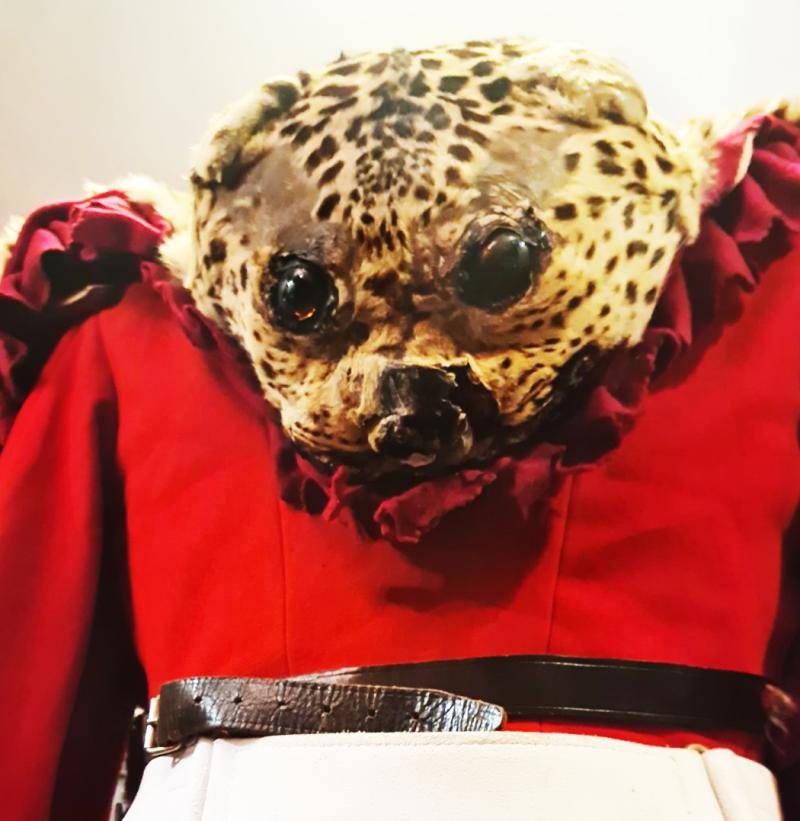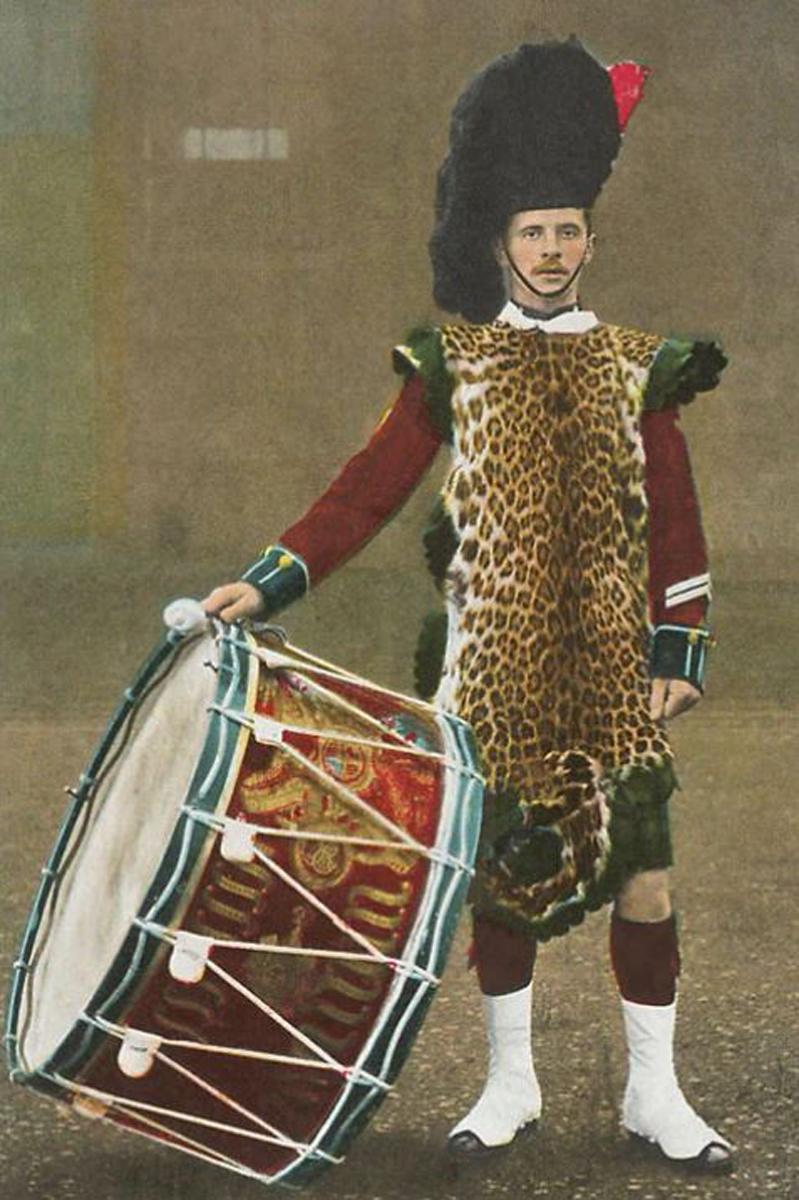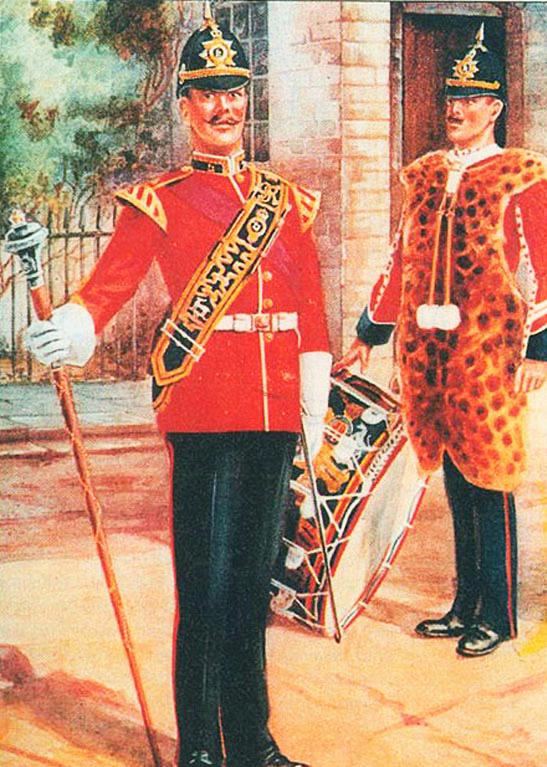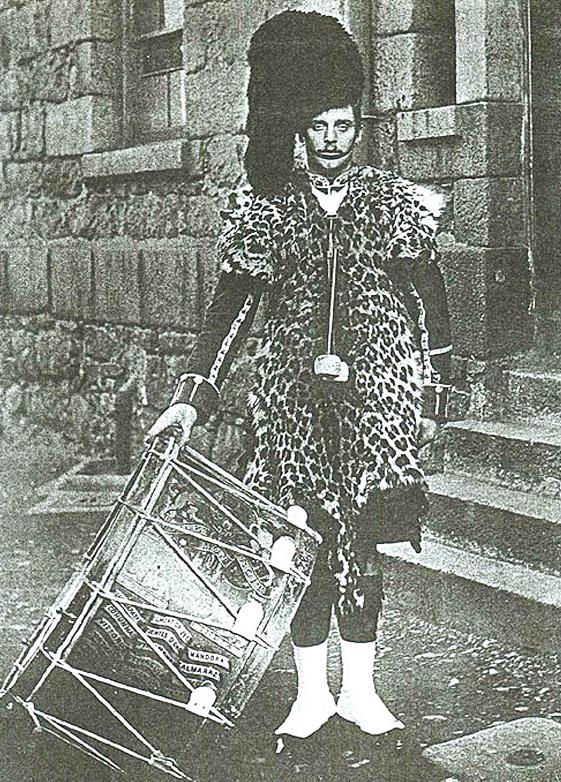An Original, Victorian, Regimental British Army Leopard Skin Apron Of Regimental Base Drummer Bandsman for The Ornately Uniformed Regimental Bass Drummer
Overall in very nice condition, full jaguar pelt including head, legs and tail. The apron is trimmed, exactly as it should for original examples, in traditional British Army Piccadills in red, and full inner red cloth lining.
Some drummers in the British Army wear leopard skins as part of their ceremonial uniforms. This tradition dates back to the 18th century, when certain regiments were granted the privilege of wearing leopard skin caps or aprons as a mark of distinction and honour.
The use of leopard skin in British Army uniforms is closely tied to the history of the Grenadier Guards regiment. In the early 1700s, King George II presented the Grenadier Guards with a pair of captured leopard skins, which the regiment then incorporated into their ceremonial dress. Over time, this became an established tradition for certain drumming and piping roles within the British Army.
The leopard skin is seen as a symbol of bravery and prowess in battle, as leopards were viewed as fierce and formidable animals. Wearing the leopard skin was meant to imbue the drummers with a sense of martial pride and warrior spirit when performing ceremonial duties.
Today, the practice continues, though the leopard skins used are now typically replicas made from synthetic materials rather than actual animal pelts. The distinctive leopard skin uniforms remain an iconic part of British Army ceremonial traditions.
Leopard skin first appeared in the C18th worn occasionally as decorative ‘turbans’ on leather helmets worn by light cavalry or light infantry, sometimes a painted emulation rather than the real thing. It was about this time that military bands with exotic elements became a fashionable accessory- black African personnel, ‘Turkish Crescent’ (or Chinese Hat) percussion devices, ornately uniformed Drum Majors etc.
The European military began using bass drums in the third quarter of the 18th century. These large barrel drums had been popular with Turkish armies for many years, and British, German and French soldiers who fought in the American Revolution were familiar with their sound. The musical taste of both enemies and allies influenced American musicians. As the war continued, Americans began adopting the use of the bass drums. By the early 19th-century, the bass drum was a standard part of America's military music.
The tunic is a great 20th century, completely original Household Division bandsman's issue, with bullion epaulettes {covered by the skin}, it is not the original one for the apron, but it does set it off superbly, sold seperately at £300.
Cities approved made prior to 1947. A percentage of the proceeds from this skin will be for the benefit of ‘Help for Heroes’ charity.
Code: 25403
850.00 GBP







